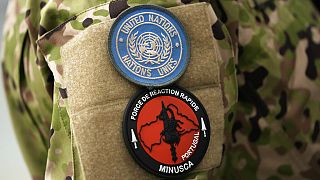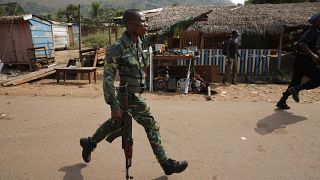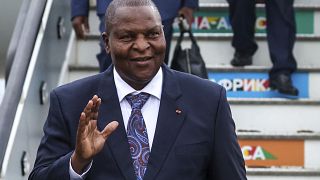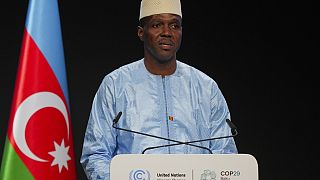Central African Republic
Nearly 5,000 fighters have put down their arms in Central African Republic since a nationwide drive to disarm rebel groups launched nearly a decade ago.
Yet former combatants, communities and conflict experts say it's hard to stop fighting in a country where little other paid work exists.
Central African Republic has been in conflict since 2013, when predominantly Muslim rebels seized power and forced the president from office. Mostly Christian militias fought back.
A 2019 peace deal only lessened the fighting, and six of the 14 armed groups that signed later left the agreement.
The Associated Press spoke with four fighters in the western city of Bouar and the capital, Bangui, who had gone through the “disarmament, demobilisation and reintegration” program.
All said they had trouble reintegrating, while two had returned to armed groups, including one who is actively fighting alongside Wagner, the Russian mercenary group.
The program began in 2015 as a pilot initiative by the U.N. peacekeeping mission. Three years later, it expanded and the government took over.
Sitting beside an idle sewing machine that she received in training, former fighter Carole said she doesn’t feel comfortable making clothes, afraid she’ll make a mistake after receiving little instruction. She gave only her first name out of fear of reprisals.
The 32-year-old joined rebels in 2013 after other fighters attacked Bouar, killing her mother and father. She worked as a cook but escaped after watching fellow rebels decapitate two rivals.
“I spent four years in the bushes and being there I saw so many bad things. I witnessed people being decapitated and all of this scared me and made me want to leave,” she said.
Now she works in the market, barely supporting her three children. She worries her 15-year-old son might be recruited by armed groups operating about 30 miles (50 kilometers) from town.
The government estimates that up to 15% of those who go through the disarmament program return to armed groups. It is not clear if that includes Wagner.
The program encourages fighters to lay down their arms and dissuades potential recruits.
To join, fighters must hand in a gun or several hundred cartridges of ammunition. They are given the choice of joining the security forces or doing vocational training.
The United Nations, which piloted and supports the program, has said it loses track of about 70% of people who participate.
Wilson Koudinguere hung his head as he listed some of the civilians he killed during his years with armed groups. He finally left in 2018 and trained with the army. But he wasn’t recruited.
“Now I’m still in Bouar doing nothing," said Koudinguere, who survives off handouts from friends and family as he looks for work.
But he is determined never to fight again.
Experts call the program shortsighted, with combatants given few viable options beyond fighting.
Nearly 70% of people in Central African Republic live in extreme poverty, according to the World Bank.











02:09
Russia vetoes UN resolution calling for immediate cease-fire in Sudan
01:12
Deaths in war-torn Sudan significantly higher than previous tolls, according to new report
01:07
Sudan keeps key aid crossing from Chad open to keep humanitarian aid flowing
00:59
RSF militia accused of 'massacre' in Sudan's Gezira state
01:57
CAR: MINUSCA head stresses “importance of” renewing stabilization mission’s mandate
01:06
Cholera fears as Sudan faces a worsening water crisis